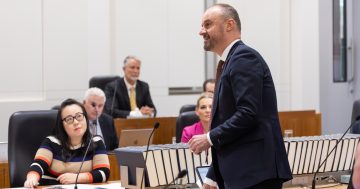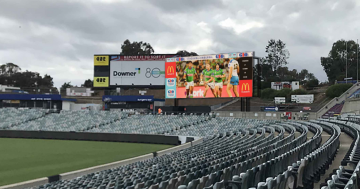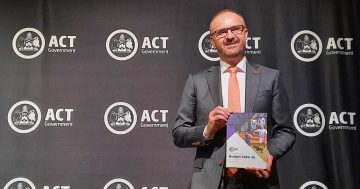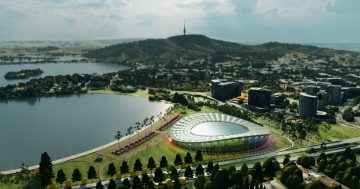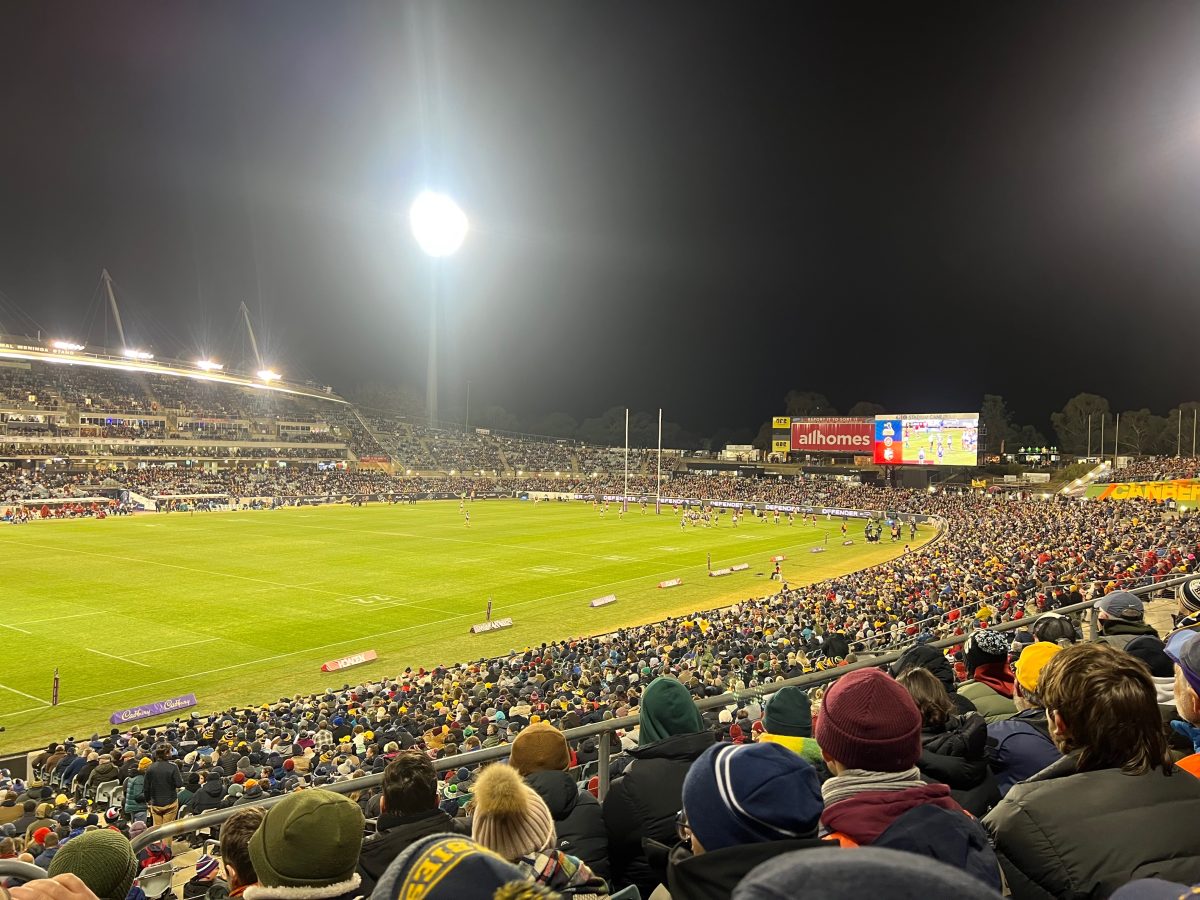
Still coping: Close to a full house at the recent Brumbies-Lions match. Photo: Tim Gavel.
Nobody should hold their breath waiting for an announcement on a new Canberra Stadium. That is clear from what the Chief Minister told Budget Estimates this week.
Canberrans should have already been in no doubt about this, but this zombie issue just won’t go away.
The timeline for years now has been set, along with the ACT Government’s infrastructure schedule that pushes any breaking of ground at Bruce out to the early 2030s.
Allow for a two-year build, and there you have the decade Mr Barr said the current stadium has left.
And forget a stadium in the city, that dream has gone.
Meanwhile, the planning work continues in locating a site and how the project would fit into the overall sport, health and education precinct that the government envisions will take shape at Bruce, including housing and retail.
There will be a new stadium, eventually. But it comes down to the cost and government priorities, and not just the ACT’s.
There are far more compelling business cases for the Canberra Theatre project, which is expected to break ground by the end of the year, and the Convention and Entertainment Centre Precinct.
These facilities offer year-round and day-to-day use, as opposed to the weekend residencies of the Raiders and Brumbies, and whatever one-off events may eventuate. Stadiums simply do not make much money.
For northside residents, a new hospital is also a must.
Light rail Stage 2A is being built in the city, and hopefully, the next stage to Woden will get underway in 2028.
Light rail haters may love to make it the scapegoat for every ill that besets the ACT, including not getting on with building a new stadium, but the government has had a mandate for years to roll out a network across the ACT to provide another transport option and facilitate new housing.
I don’t know if stadium advocates have noticed, but the ACT Budget is a tad tight at present, and the government is staging its infrastructure projects accordingly.
There is competition for labour and materials, and there is a little event in Brisbane in 2032 that will stretch the capacity of states and territories to deliver projects.
The Commonwealth is contributing $3.4 billion to the construction of Brisbane’s new Olympic Stadium and other venues, so it should not be expected to fork out half a billion dollars to go halves with the ACT in a new stadium here before then, because a billion is what it will probably take to get the job done.
Not to mention a commitment to a new AFL stadium in Hobart, although the backlash there may yet see that project scuttled.
Yes, a new state-of-the-art stadium would be fabulous, particularly one that provides greater comfort during Canberra’s big freeze.
Canberra Stadium may be tired, but it is not about to fall down, and as Mr Barr points out, the ACT is the tenant, not the owner.
It is having one of its best seasons yet, with a close-to-sellout crowd for the Matildas, the Lions, and the high-flying Canberra Raiders, proving that Canberrans will still turn out if the product is right and there is plenty of life in it yet.
There is every sympathy for the players and fans who would like a better experience, but unless private interests come forward – and don’t expect it – taxpayers will have to pay for a new stadium, so a stadium will have to wait its turn in the queue.













